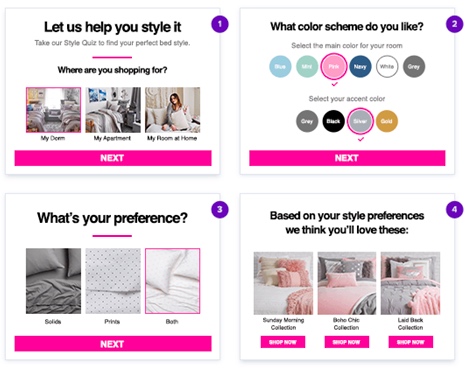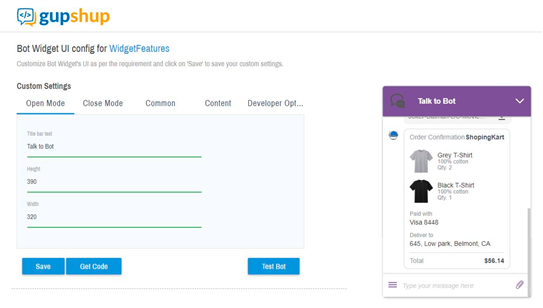Path Digital › News & Blog › How to succeed as a new Shopify business
How to succeed as a new Shopify business
by AdNabu on January 17, 2021
/ 0 comments leave a reply

Since the advent of the digital age, a wide array of e-commerce platforms have sprung up, offering sellers numerous options through which they can sell their products.
One such platform is Shopify, which lets retailers create an online store and sell their products. While making the store is easy, even for a beginner, making your store and products stand out can be challenging. In this post, let’s discuss how to succeed with the Shopify platform.
What is Shopify?
Shopify is a commerce platform that facilitates the sale of products online and in person. Sellers can either set up an online store and sell online or on social media, or sell in person or through stores. Shopify is a reputed, decade-old service that caters to the needs of both big and small businesses. Since its conception in 2004, the platform has seen monumental growth and now includes over 375,000 stores.
Why Should You Use Shopify over other eCommerce platforms?
While Shopify is the biggest and most popular eCommerce platform, it’s not the only one. Here are some reasons why you should choose Shopify over other eCommerce platforms:
- BigCommerce – Founded in 2009, it is one of the biggest competitors of Shopify. However, while both platforms have grown monumentally and gained popularity, Shopify is easier to use and has better sales features, customer support, inventory system, mobile application, flexible shipping options, and multi-channel selling across social media platforms, and is much more popular, making it the clear choice.
- Volusion – Volusion is another eCommerce platform, with specialized tools for data and analytics. However, these make the platform difficult to use. Moreover, Shopify has a better design and sales features, customer support, and is cheaper and larger than Volusion. Volusion also does not have a blog feature and doesn’t support the sale of digital products.
- WooCommerce – WooCommerce is also a popular platform for WordPress-built stores, but is not as beginner-friendly. Unlike Shopify, you will require some coding knowledge to use the platform. Shopify also offers better sales features and website features and has a wider reach than WooCommerce.
10 Tips to succeed in the Shopify platform
Shopify allows retailers of all scales to sell a wide array of products. However, competing with thousands of stores can certainly be challenging, so here are some ideas to succeed with Shopify:
1. Be Ready for Mobile Commerce
Desktop computers no longer bring in the extent of online traffic that they once did. Mobile devices are responsible for almost 60% of internet use in North America alone.
Be Mobile-Responsive from the beginning
Considering that a huge part of your traffic will originate on smartphones and tablets, it is important that you make your online store accessible easily on these devices. Do this from the start or else you’re missing out on that 60% consumer base.
Mobile app: is there a use case for your store?
For some e-commerce businesses, the best way to facilitate this is through the creation of an app(s) for your online store. (Shopify offers a number of solutions to do this.) With an app framework, you can even convert your website visitors to app users. It’s important to target ALL mobile customers as we move towards a more mobile-powered future. An app will also increase your chances of ranking higher in Google Search results.
2. Product inventory: offer more, sell more
Simply by keeping your inventory current, fresh, and well stocked, you’ll be doing a lot to meet your e-commerce goal to sell more products. Adding more products to your store is one of the most vital Shopify success tips, a lesson that can be learned from the success of Amazon.
Scale to meet demand with large collections
Online stores are capable of procuring and supplying a wider range of products than physical stores, which have space constraints. More products will help you cater to more consumers, thus resulting in more sales.
It is thus important to identify all the options that are relevant to your brand and be flexible with what you sell. You can start out with your unique product and expand later.
3. Have a plan for Customer Retention
Retaining existing consumers is more effective than acquiring new ones — according to one study, 65% of sales come from a store’s previous customers. Customer retention can be done through various methods like email marketing, retargeting ads, giveaways and contests, and creating a positive experience for your customers through good customer support, creative packaging, and so on.

a. Leverage email marketing
Regular emails to your consumers regarding new products, sales, and offers, or even seasonal emails, birthday messages, and holiday-specific mails can go a long way in improving consumer retention.
Shopify offers app solutions to also send automated cart abandonment emails to remind customers of your product that they desired earlier. You can also check whether your product review solution (see “Reviews” below) allows for automated review requests, so you can boost valuable customer “proof” on your site.
b. Delight customers
Every customer is special to you and you need to let them know it. You can make small, thoughtful gestures like putting handwritten notes into their packages, giving surprise offers, and most importantly, giving prompt customer service. Creating a positive experience for your consumer and prospective consumers is a vital aspect of marketing.
c. Use unique packaging
Every time your customer purchases your product, you can ensure that they have a satisfying unboxing experience.
You can even send your product to influencers on social media and YouTube and ask them to upload videos of the unboxing. Improve your packaging with handwritten notes, coupons, referral vouchers, and manuals.
d. Use Retargeting Ads
Retargeting ads are offered by some networks and they display products that the customer has already viewed on your website. Retargeting ads are a way of bringing your store and products to the notice of prospective customers by placing cookies in their browser. They allow you to show ads to them through Google Ads or Facebook.
e. Offer Giveaways
Giveaways can be an effective tool in attracting new customers as well as retaining existing ones. Let your customers win free products or exciting offers for your online stores to build customer loyalty.
You can have giveaways through contests as contests will attract huge participation. You can have contests directed at a specific type of audience or to a special line of products. Contests will also help you collect user-generated data and content.
f. Give Coupons for Repeat buyers
The most effective tool to build customer loyalty is to give coupons with discounts, either for repeat purchases or for referrals. Coupons will also marginally improve the unboxing experience.
To promote referral and repeat purchases, make sure to include coupons, vouchers, catalogs, and look books.
g. Have a Loyalty Program
Set up loyalty programs with which your customers can earn reward coins or points, depending on the amount of their purchase. This is a great tactic for consumer retention.
You can even have paid loyalty programs, like special memberships that offer additional features and services like free delivery, faster delivery, or early access to discounted products, to your customers.
4. Build an email list
A strong email list, consisting of all the people who have signed up in your online store at some point, is very useful as you can send emails regarding offers, seasonal sales, or price drops whenever you need. Instead of relying on cookies or social media, you can drive traffic to your store by yourself.
Build your list from the start!
Email marketing is a very effective and efficient marketing tool as it is cheap and has a wide reach for the people who are genuinely interested in your products.
Start maintaining your email list from the very beginning so that you can convert visitors to customers that you can send valuable updates from time to time.
5. Have a Content Marketing strategy in place
Content marketing refers to the creation and sharing of online material like images, videos, blogs, etc. that can stimulate interest in your brand’s products and services.
Content marketing generates a return on investment 8 times greater than traditional marketing. Here are some content marketing techniques you can use:
a. Product Images
Product images that make your product look attractive are extremely important to attract customers. It is essential that the images you use are high quality. For SEO and site speed, you can also do the following:
- Name the image file descriptively (don’t use only numbers or the same file name repeatedly)
- Image size: keep your image below a maximum 1800px height or width
- Compress your image (there are lots of free online tools to do this!)
Through images, you can feature the product in use in different ways. Make sure that your images show all aspects of the product to give the customer a clear idea of what they’re buying, as it is difficult to judge a product online when you don’t have the ability to hold it and test it personally.
b. Product videos
Product videos, especially of the product in use, are a very effective marketing technique. Research has shown that 64% of users are more likely to purchase a product by watching its video online and 90% of consumers have said that product videos have been vital to their purchasing decisions.

c. Product Descriptions
A concise product description that communicates to your consumers exactly what your product is, along with its specifications and its uses, in an engaging manner, is a potent marketing strategy for your online store. Considering that Google’s algorithm further promotes high-quality content, a powerful product description is very important. NOTE: product description uniqueness goes a long way for both SEO & your users, so don’t duplicate descriptions across products if you can help it.
d. Product Pages
Your product page needs to grab the consumer’s attention and should contain a precise explanation of the specifications and uses of your product, along with images and videos of your product and suggestions about similar products.
The quality of your product page will determine whether or not you are able to convert a visitor into a buyer. It is thus important to focus on all aspects, i.e., visual, content, and navigation, to make an impactful product page.
e. Product Reviews & Recommendations
Product reviews from other customers can help build confidence in your brand and its products. You can provide a review section on your product page and also include reviews from social media platforms and blogs. A Shopify (or other e-commerce platform) app can be a big help in this regard.
It is important to ask your customers to review the products they have purchased and you can also provide recommendations for future purchases depending upon their past purchases. (Per above, some apps may even help automate review requests to make your job a little easier.)
In 2013, 35% of Amazon’s revenue was generated from the recommendations given to past consumers. These recommendations can be sent easily through email.
6. Have a Storytelling Marketing Strategy in place
Using content that gives more information about your brand and your product, that tells a story or gives the customer an opportunity to connect with your brand on a personal level can generate a lot of sales.
Studies have shown that customers are very receptive to such personal connections and stories, rather than logic and facts.
Use images & visuals whenever needed
Images and visuals always grasp attention much quicker than blogs and descriptions, so use them as much as possible. You can also include images of your customers using your products and their reviews on it, and have regular posts on social media platforms. These techniques will help foster trust among your customers.
7. Create Interactive Content
Since an online store is quite impersonal and does not afford your customer the luxury of walking through the aisles and browsing through your products, holding them and testing them, asking queries about them, or trying them on, interactive content can be very useful.
 a. Using Quizzes
a. Using Quizzes
Quizzes are the simplest form of interactive content that has helped stores generate millions of dollars in revenue.
One such example is that of Zenni Optical, a glasses manufacturer and retailer, that used short, entertaining quizzes that gave them 29,140 conversions. Quizzes can also be an easy way for customers to choose their desired kind of product and find just the product that they are looking for.
For more ideas to add an element of interactivity to your site content, you can see this article from CED Commerce.
8. Use Paid Ads effectively
Platforms like Facebook, Instagram, and Google allow you to purchase organic traffic by displaying ads to their users. Data shows that the top-most ads on Google Search get clicked on 19.3% of the time on a desktop and 27.7% of the time on mobile devices.
These ads stand greater chances of conversion as they are shown to targeted customers, those who are actually looking to buy the product.
a. Google Shopping Ads
Google Shopping ads are an advertising tool where Google will display product ads at the top of search results when the consumer searches for a product. All you need is a Google Merchant Center account and a Google Ads account. Ads display the picture, price, description, and reviews of the product.
Ensure that authentic images are displayed, check the product feed quality, and become a Google Trusted Store to increase ranking and click-through rates.
b. Facebook Ads
Facebook facilitates paid advertising for your products and also publishes entire product catalogs. The Facebook Ad app takes existing product data from your store and publishes it in a compatible form, enabling customers to easily make purchases.
Depending on your product niche, this may offer good conversion rates, as customers who are busy and reluctant to visit websites and browse for products can now just look at these ads, obtain all the necessary information from the catalog and save a ton of time.
c. Instagram Ads
Instagram displays sponsored ads like images and videos on user feeds, in between stories and posts. It enables customers to discover and even purchase the product. Reviews by influencers and customers also encourage purchases.
You can hire Instagram influencers to post pictures of your product or make videos of their unboxing or use. Creative ads with attractive pictures that advocate for your brand and grab the viewer’s attention are very important.
9. Always be supportive
A huge aspect of customer retention or even attraction is the customer support and service that you provide. It is important to provide prompt and polite support to your customers whenever they need it, as it helps build trust and confidence in your brand.
Customer support can be provided on the website and/or through the social media accounts of your store.

a. Using Chatbots
Chatbots on websites are a great tactic for providing customer support. These chatbots have predetermined queries from which the customer can choose their relevant concern and obtain an instant automated response and solution to their problem.
For customers dissatisfied with the automated response, you should provide a helpline so they may explain their problem to a qualified representative of your store.
b. Using Help Articles & FAQs
Help articles & FAQ content that explain to your consumers the different uses of your product and also provide solutions for different problems that may arise while using the product are the cheapest way to win consumer confidence. You can also feature this type of content on your Shopify blog.
10. Keep security an important thing from the beginning
In an atmosphere of data protection and privacy concerns, one of the most important Shopify success tips for your store is to safeguard the privacy of your customers.
Any user data, whether it be contact information or payment details, has to be safely stored, encrypted and protected from hackers.
Payments & customer details
Data protection and encryption software have to be used in order to safeguard customer details, including their financial information. You can check your e-commerce platform security features to ensure that you’re providing the most secure payment options in your store.
Customers will not trust your brand unless they are confident that their security and privacy are being valued. With hackers and fraudulent sites on the rise, it is important to inform your customers of an authentic means of communication and payment to your store so that they can steer clear of fakes.
Conclusion
On a huge platform like Shopify, making your store, brand, and product stand out can be made easy with these ideas to succeed with Shopify. Test the above tips out on your Shopify store, and apply them in your strategy to grow your brand and business!
Additional resources
- How to Sell on Shopify – Complete Guide by AdNabu
- How to Get Traffic to your Shopify Store?
- How to get more loyal customers to your Shopify store?
- Guide to Conversion Rate Optimization for shopify stores by AdNabu
(Guest post courtesy of Shopify app developer AdNabu.)
AdNabu helps improve Google Ads revenue for e-commerce companies. If you are running paid search, Google Shopping, or display campaigns through Google Ads, our software is designed to help you increase your sales.
Leave a Reply